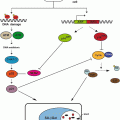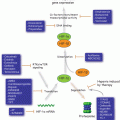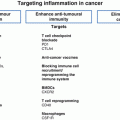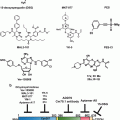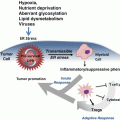Fig. 1.1
Pushing cancer cells ‘off the cliff’. Cliff at Dieppe by Claude Monet, 1882 (Adapted from http://www.wikiart.org/en/claude-monet/cliff-at-dieppe; public domain)
In this book entitled ‘Stress Response Pathways in Cancer’, leading authorities in research institutions from five continents have contributed 17 chapters that cover the complex framework underlying alterations of cell stress response pathways in tumorigenesis focusing on molecular mechanisms and potential therapeutic opportunities. The chapters center on the following areas of cancer stress regulation: Coverage of DNA damage stress response (Chap. 2 ) and cell cycle checkpoint dysregulation (Chap. 3 ) is followed by a comprehensive review of p53 function in stress response and tumorigenesis (Chap. 4 ). Next, sirtuins are presented as a double-edged sword in cancer (Chap. 5 ), followed by an introduction to microRNA-regulated stress responses as a novel causative factor in tumorigenesis (Chap. 6 ). The following two chapters are dedicated to the complex role of cellular senescence, covering its mechanistic role in oncogenesis (Chap. 7 ) and presenting therapeutic opportunities of pro-senescent intervention (Chap. 8 ). The important role of proteotoxic stress in tumorigenesis and cancer therapy is explored extensively in the following chapters. First, the integrated proteotoxic stress response is interrogated for induction of cancer cell apoptosis (Chap. 9 ), followed by an in-depth coverage of Hsp70 heat shock protein family function in tumorigenesis (Chap. 10 ). Next, a comprehensive exploration of the ubiquitin-proteasome system (UPS) as an important cancer drug target is undertaken (Chap. 11 ). The role of endoplasmatic reticulum (ER) stress in tumorigenesis is presented focusing on molecular mechanisms and therapeutic opportunities in multiple myeloma (Chap. 12 ). Next, the role of oxidative stress and redox dysregulation in tumorigenesis is covered focusing on genetic alterations in malignant melanoma (Chap. 13 ). The following three chapters of the book illuminate the important subject of tumorigenic metabolic reprogramming. First, molecular mechanisms and therapeutic opportunities associated with hypoxic adaptations of cancer cells are explored (Chap. 14 ). Next, the tumorigenic function of glycolytic adaptations and their potential role for therapeutic intervention are covered comprehensively (Chap. 15 ). Finally, the role of VDAC1 as a promising cancer drug target based on its function in mitochondrial metabolite transport and apoptosis is presented (Chap. 16 ). Finally, a chapter is dedicated to the important role of inflammatory dysregulation in tumorigenesis with a focus on pancreatic cancer (Chap. 17 ), followed by an integrative coverage of the novel concept of cell-nonautonomous ER stress-mediated dysregulation of immune function by cancer cells (Chap. 18 ).
Stay updated, free articles. Join our Telegram channel

Full access? Get Clinical Tree


